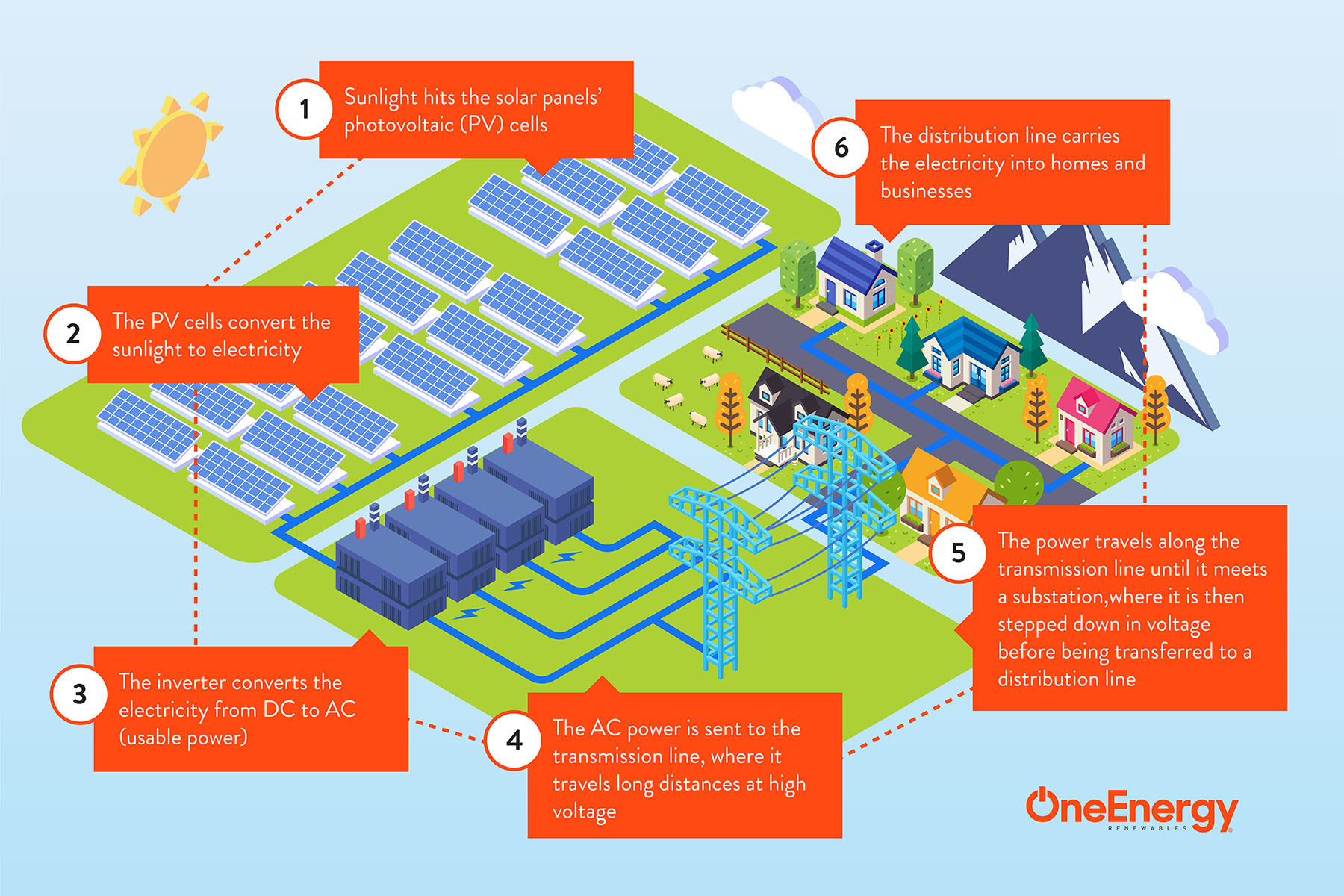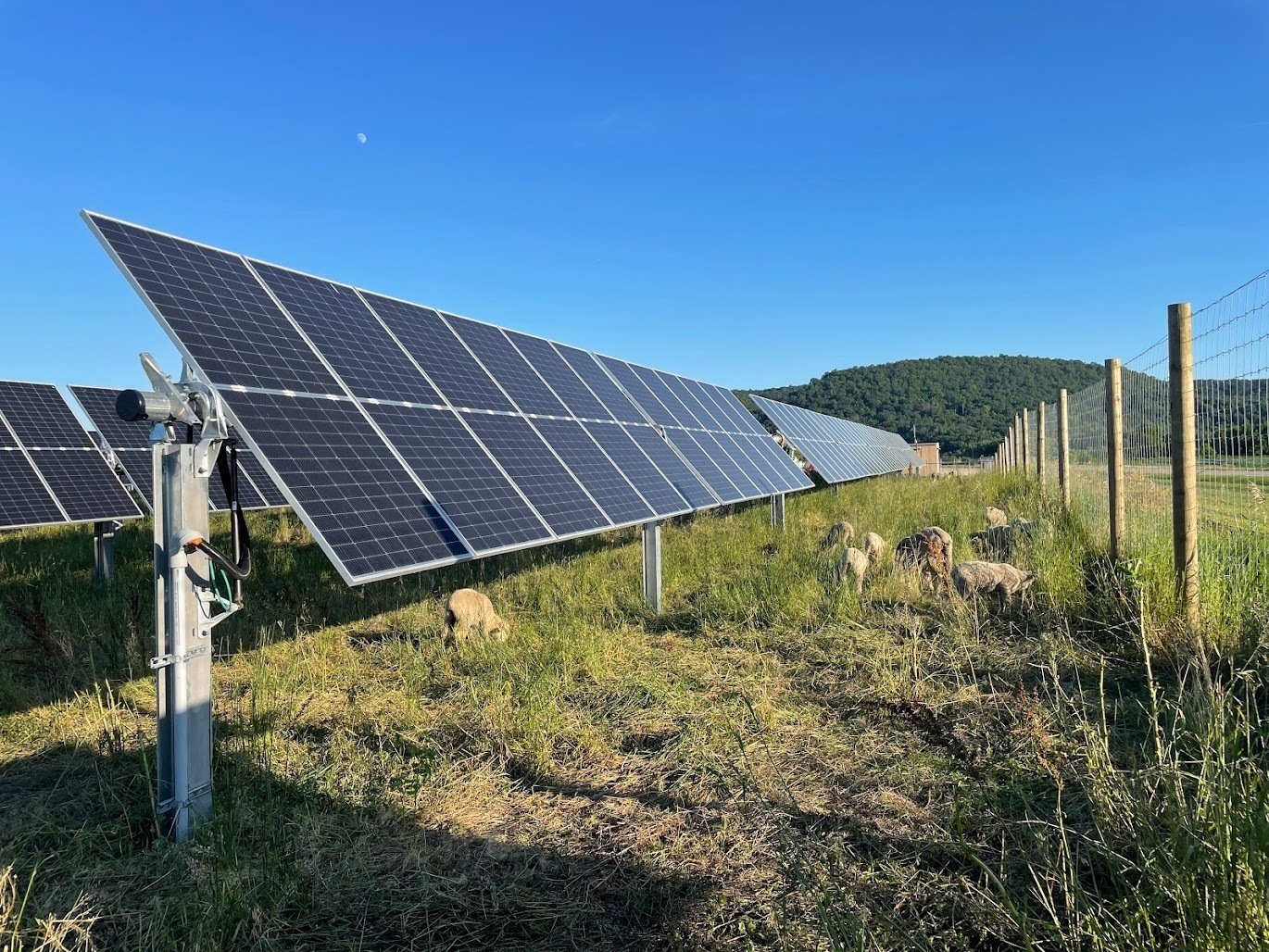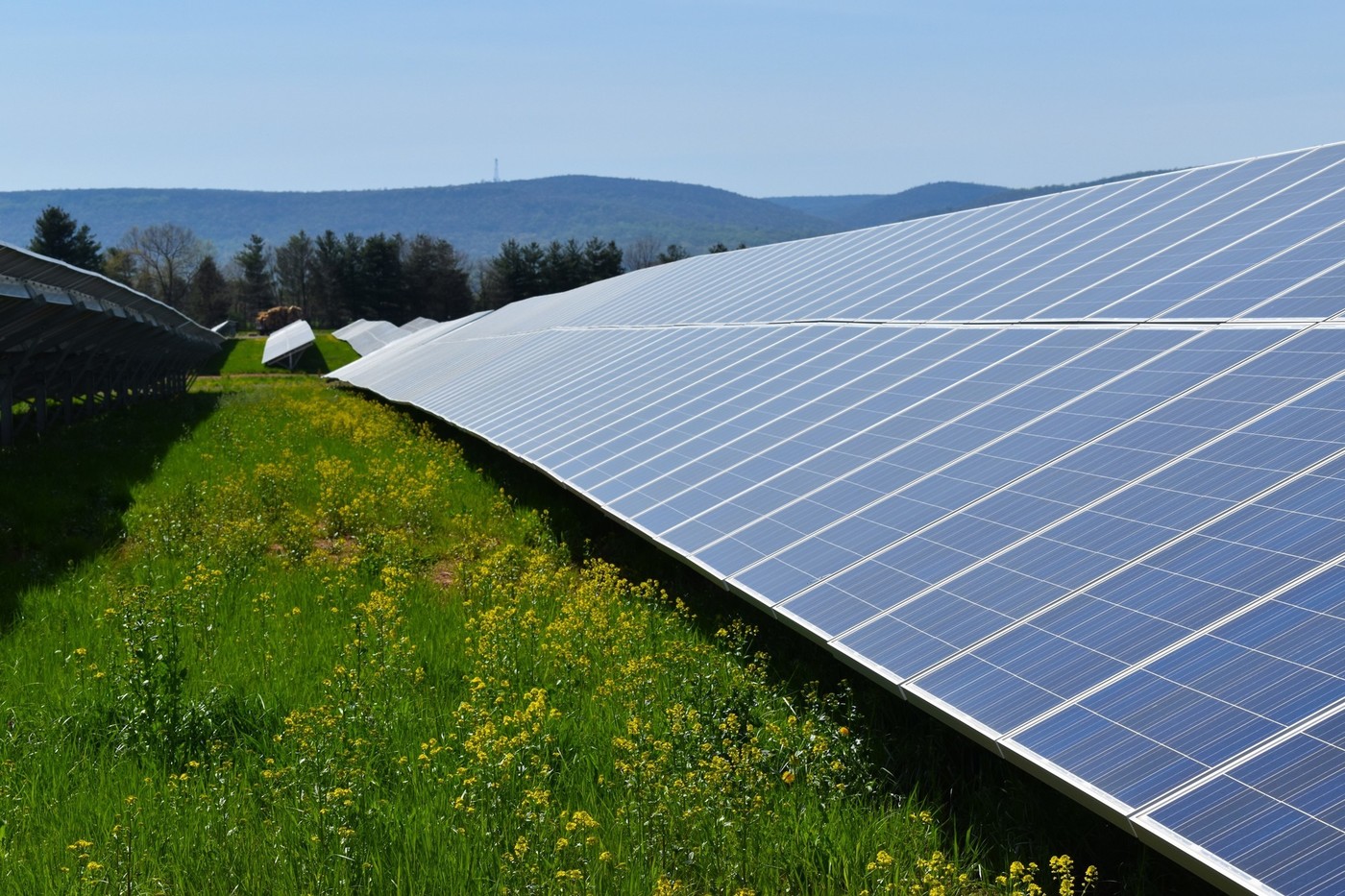About Solar Energy
How Solar Works
Getting electricity into your home or business begins with generation.
The three major ways that electricity is generated in the U.S. are from burning fossil fuels like coal, petroleum, and natural gas (~60%), from nuclear energy (~20%), and from renewable energy sources, like solar and wind (~20%).
Once energy is generated, transmission lines carry the energy from its source to areas where it’s used, like homes and businesses. Along the way, transformers step-up and step-down the power to the appropriate voltage levels for moving through transmission or distribution lines. The power is also converted from direct current (DC) to alternating current (AC), which is easier to transmit over long distances and is also the type of power that is used in most applications.
Solar and other generation facilities typically connect to the larger electrical grid. Before connection can occur, studies may need to take place to determine whether any upgrades to power lines or other electrical facilities are needed.

Solar as a Good Neighbor
One of the benefits of using land to host solar panels as opposed to other commercial or industrial uses is that solar has a reputation for being a good neighbor.
Some of the common concerns with other industrial uses that you won’t encounter with solar panels include:
Noise. If you’re near a solar farm, chances are you won’t hear a thing. The panels themselves don’t make any noise, and sound levels from inverters range from 48 to 72 decibels at a distance of 10 feet–far closer than anyone will get to the inverters. In fact, the minimum distance from the parcel boundary to the inverters is 55 feet. For comparison, a household refrigerator is about 55 decibels, and normal conversation takes place at about 60-70 decibels.
Dust, smoke, and particulate pollution. No dust, smoke, or particulates will be created once the solar facility is in operation. During construction, appropriate dust control measures using industry best practices will be implemented.
Traffic. Once a solar facility is up and running, it requires very little maintenance, which means sparse traffic to and from the facility. One or two light-duty vehicles per month are expected.
Chemicals and toxins. While some solar panel models do contain metals that can be harmful to human health and the environment when improperly disposed of (similar to cellphones and other digital devices), solar energy systems do not pollute the water or air, and there is no evidence that solar panels are harmful to human health when in operation, according to the World Health Organization.
Odor. Solar panels emit no odor. You can’t say that about most other industrial and commercial facilities!
Glare. Any glare will be imperceptible at the boundary line of the Palouse Junction Solar Project. In fact, solar panels reflect far less sunlight than many common materials, including those found in nature, like snow and flat water.
Benefits of Solar for Rural Communities
Diversifying energy generation supports energy resiliency, economic growth, and energy independence.
Solar energy offers a consistent, reliable form of energy production that utilizes the sun and components that require little maintenance and rarely experience failure. Renewable energy also allows communities the opportunity to produce their own energy in a way that’s inexpensive and independent of big power producers.
In rural areas, solar energy offers the benefits of new revenue sources for landowners. It increases the size and diversity of the tax base, and provides an opportunity for those engaging in land-based activities to diversify and stabilize their income sources. Solar energy development may also create short- and long-term job opportunities for local workers, including apprenticeship opportunities. In farming communities, the generation profile of the solar panels are a great match for powering irrigation, since both are most active during the same time windows.

About Agrivoltaics
Agrivoltaics is a combination of the words “agriculture” and “photovoltaic.” Also known as dual-use solar, agrivoltaics is the practice of simultaneously using land for both solar PV generation and agriculture with the two systems complementing one another. The Palouse Junction Solar facility may have the opportunity to integrate an agrivoltaic component. This could be in the form of solar grazing, where sheep will graze around the solar panels. OneEnergy has implemented solar grazing at projects across the country. Solar grazing is a win-win for the environment, the community, and farmers–agrivoltaics allows working lands to stay working, provides a diversified source of income for farmers and grazers, offers shade for grazing sheep, and means fewer fuel emissions from mowing. By eliminating mowing operations, grassy areas are also kept safer from the threat of wildlife.

External links
To learn more about how solar energy works, the benefits of solar, and solar grazing, consider:
Electricity in the U.S. - U.S. Energy Information Administration (EIA)
How Does Solar Work? | Department of Energy
Local Renewable Energy Benefits and Resources | US EPA
Agrivoltaics: Coming Soon to a Farm Near You? | USDA Climate Hubs

